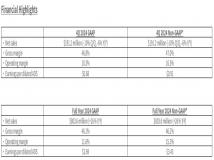本文介绍Nginx服务器中使用lua获取get或post参数,希望对于初学Nginx服务器相关的朋友有帮助,更多Nginx安装、配置、报错处理等资源请本站内搜索。。
local request_method = ngx.var.request_method
local args = nil
local param = nil
local param2 = nil
--获取参数的值
if "GET" == request_method then
args = ngx.req.get_uri_args()
elseif "POST" == request_method then
ngx.req.read_body()
args = ngx.req.get_post_args()
end
param = args["param"]
param2 = args["param2"]
升级版(能处理content-type=multipart/form-data的表单):
local function explode ( _str,seperator )
local pos, arr = 0, {}
for st, sp in function() return string.find( _str, seperator, pos, true ) end do
table.insert( arr, string.sub( _str, pos, st-1 ) )
pos = sp + 1
end
table.insert( arr, string.sub( _str, pos ) )
return arr
end
local args = {}
local file_args = {}
local is_have_file_param = false
local function init_form_args()
local receive_headers = ngx.req.get_headers()
local request_method = ngx.var.request_method
if "GET" == request_method then
args = ngx.req.get_uri_args()
elseif "POST" == request_method then
ngx.req.read_body()
if string.sub(receive_headers["content-type"],1,20) == "multipart/form-data;" then--判断是否是multipart/form-data类型的表单
is_have_file_param = true
content_type = receive_headers["content-type"]
body_data = ngx.req.get_body_data()--body_data可是符合http协议的请求体,不是普通的字符串
--请求体的size大于nginx配置里的client_body_buffer_size,则会导致请求体被缓冲到磁盘临时文件里,client_body_buffer_size默认是8k或者16k
if not body_data then
local datafile = ngx.req.get_body_file()
if not datafile then
error_code = 1
error_msg = "no request body found"
else
local fh, err = io.open(datafile, "r")
if not fh then
error_code = 2
error_msg = "failed to open " .. tostring(datafile) .. "for reading: " .. tostring(err)
else
fh:seek("set")
body_data = fh:read("*a")
fh:close()
if body_data == "" then
error_code = 3
error_msg = "request body is empty"
end
end
end
end
local new_body_data = {}
--确保取到请求体的数据
if not error_code then
local boundary = "--" .. string.sub(receive_headers["content-type"],31)
local body_data_table = explode(tostring(body_data),boundary)
local first_string = table.remove(body_data_table,1)
local last_string = table.remove(body_data_table)
for i,v in ipairs(body_data_table) do
local start_pos,end_pos,capture,capture2 = string.find(v,'Content%-Disposition: form%-data; name="(.+)"; filename="(.*)"')
if not start_pos then--普通参数
local t = explode(v,"rnrn")
local temp_param_name = string.sub(t[1],41,-2)
local temp_param_value = string.sub(t[2],1,-3)
args[temp_param_name] = temp_param_value
else--文件类型的参数,capture是参数名称,capture2是文件名
file_args[capture] = capture2
table.insert(new_body_data,v)
end
end
table.insert(new_body_data,1,first_string)
table.insert(new_body_data,last_string)
--去掉app_key,app_secret等几个参数,把业务级别的参数传给内部的API
body_data = table.concat(new_body_data,boundary)--body_data可是符合http协议的请求体,不是普通的字符串
end
else
args = ngx.req.get_post_args()
end
end
end
声明: 此文观点不代表本站立场;转载须要保留原文链接;版权疑问请联系我们。










